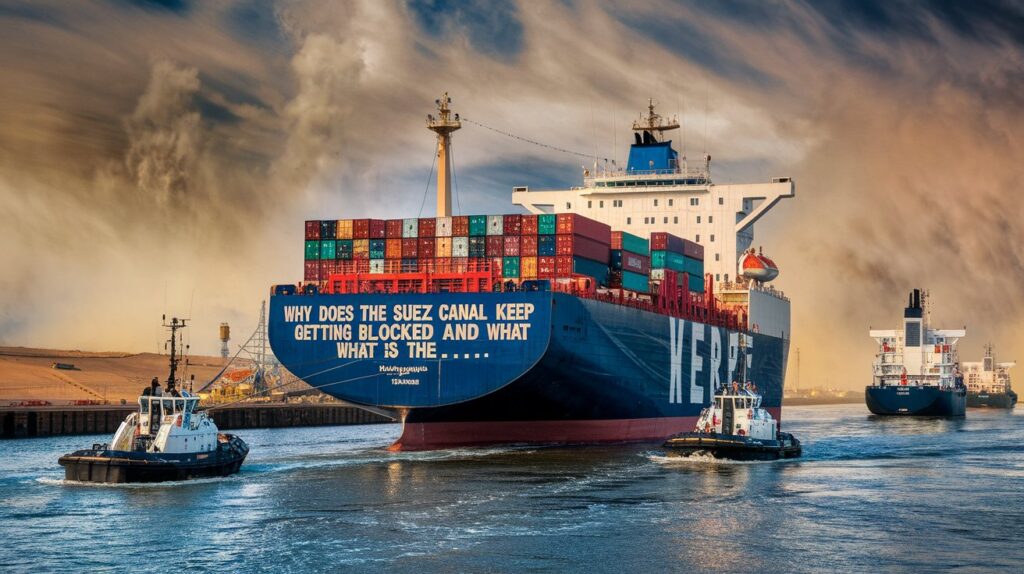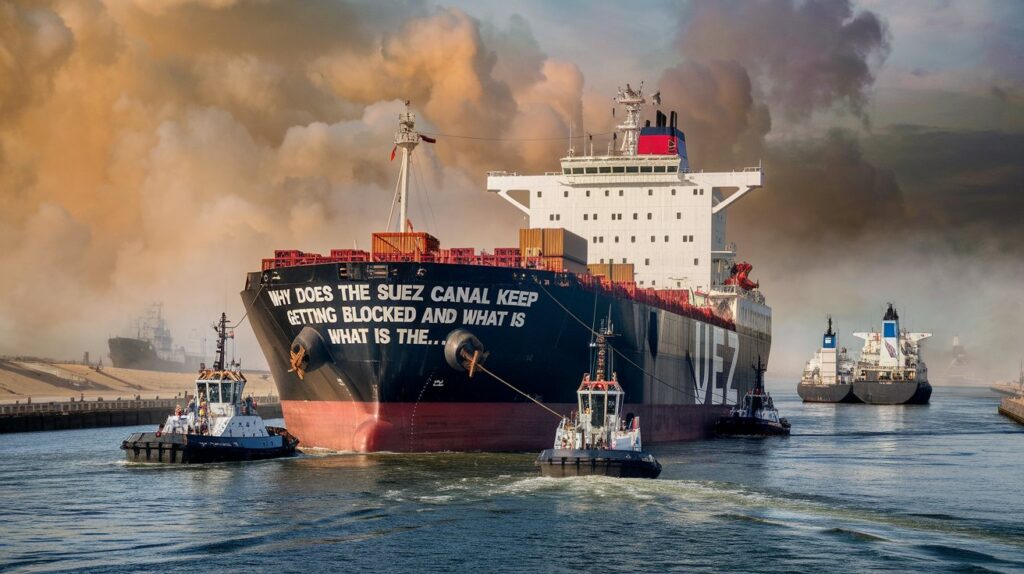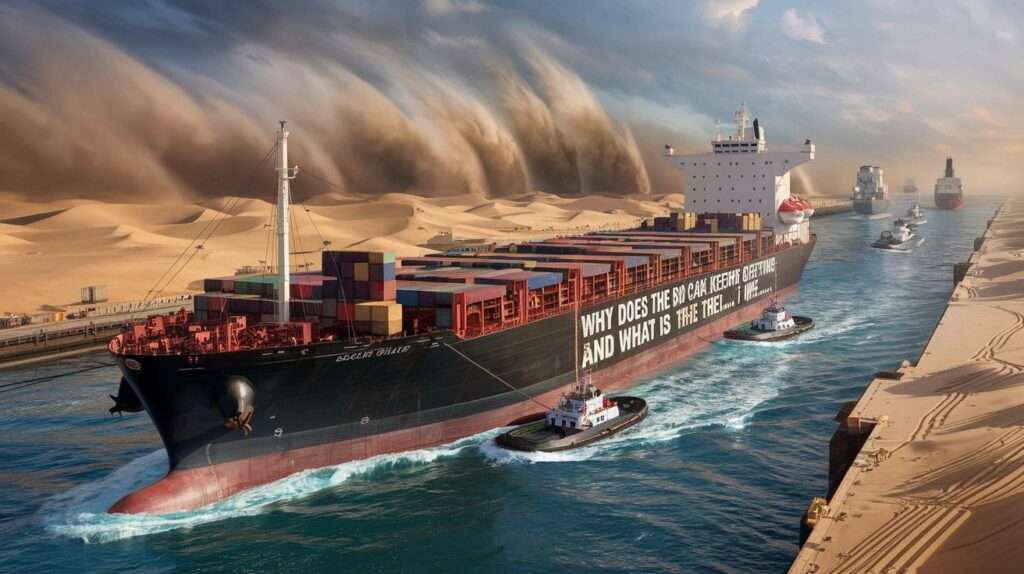The Suez Canal is an essential artery of global commerce, connecting the Mediterranean Sea to the Red Sea. This 120-mile-long artificial waterway handles over 10% of international trade and is a critical passage for transporting goods, oil, and other commodities between Asia, Europe, and beyond. Despite its significance, the canal has gained notoriety for frequent blockages that disrupt global supply chains.
Let’s dive deep into why does the suez canal keep getting blocked and what is the … to ensure smoother operations.
Biography Table for “Why Does The Suez Canal Keep Getting Blocked And What Is The …”
| Attribute | Details |
|---|---|
| Topic | Why does the Suez Canal keep getting blocked and what is the solution |
| Main Focus | Exploring causes, impacts, and solutions for frequent blockages in the Suez Canal |
| Location | Suez Canal, Egypt |
| Importance | A crucial global trade route connecting the Mediterranean Sea to the Red Sea |
| Popular Incidents | Ever Given blockage (March 2021), occasional mechanical failures, and weather-related issues |
| Causes of Blockages | Vessel size, human error, environmental factors, mechanical failures |
| Global Impact | Disruptions to global supply chains, increased costs, and delays in trade |
| Solutions Implemented | Canal expansion, advanced navigation systems, improved training, and emergency preparedness |
| Popular Mention | Frequently featured in global news due to its economic significance and high-profile incidents |
| Reason for Popularity | The Suez Canal’s role in global trade and the scale of disruptions caused by blockages |
| Future Outlook | Continuous improvements in technology, safety protocols, and infrastructure |
Recent News and Popularity Analysis
Why is this topic so relevant?
The topic “Why Does The Suez Canal Keep Getting Blocked And What Is The …” gained traction due to the Ever Given incident in 2021, which highlighted the vulnerabilities of global trade routes. The phrase is popular because of its relevance to international commerce, logistics, and global supply chain discussions.
Key News and Updates:
- Suez Canal Expansion: News outlets frequently report on canal widening projects aimed at accommodating larger vessels.
- Technological Advancements: Updates about integrating AI and automation for safer navigation draw attention.
- Economic Impact: Articles analyze the ripple effects of canal disruptions on industries and global trade.
- Environment Concerns: Discussions focus on the environmental toll of blockages and detours.
The topic remains popular due to its direct connection to global economics, geopolitical strategies, and advancements in maritime logistics.

Why Does the Suez Canal Keep Getting Blocked?
The Suez Canal is not immune to challenges. Its strategic importance amplifies the impact of any disruption. Below are the primary reasons the canal continues to experience blockages:
1. Increasing Vessel Sizes
Modern cargo ships, like the Ever Given, have grown to colossal proportions. These mega-ships, often over 400 meters long, are designed to maximize cargo capacity. However, their size makes navigation through the canal’s narrow and shallow sections precarious. Even slight misalignments can lead to grounding incidents.
2. Environmental Challenges
The Suez Canal faces unique environmental conditions, including strong crosswinds, sandstorms, and tidal variations. These natural phenomena can significantly reduce visibility and make steering large vessels challenging. For instance, the 2021 Ever Given incident was partially attributed to high winds.
3. Human Error
While technology has advanced, human oversight remains integral to navigation. Errors in judgment, miscommunication, or insufficient experience handling complex maneuvers in tight spaces can lead to accidents. Poor coordination between captains, pilots, and canal authorities can exacerbate risks.
4. Mechanical Failures
Vessels traversing the canal often operate under intense pressure to meet tight schedules. This stress can lead to mechanical failures, such as engine malfunctions or rudder issues. A single mechanical problem can immobilize a ship, causing delays for hundreds of others.
The Ever Given Incident: A Case Study
The most infamous blockage occurred in March 2021, when the Ever Given, one of the world’s largest container ships, lodged sideways in the canal.
- What Happened? Strong winds and human error caused the Ever Given to run aground, completely blocking the canal for six days. The 400-meter-long ship was stuck at an angle, halting movement in both directions.
- The Impact: This event disrupted global trade, delaying billions of dollars in goods. Over 400 ships were left stranded, waiting for the blockage to clear. Oil prices briefly spiked due to supply chain interruptions.
- The Resolution: A massive dredging operation, with tugboats working around the clock, finally freed the vessel. However, the economic and logistical ripple effects lasted weeks.

What Is Being Done to Prevent Future Blockages?
Given the frequency and consequences of blockages, efforts are underway to bolster the canal’s resilience and efficiency. Here are some key measures:
1. Expanding the Canal
The Suez Canal Authority has initiated projects to widen and deepen certain canal sections. These upgrades aim to accommodate larger vessels and reduce the risk of groundings. A second parallel channel has also been added in parts of the canal to allow two-way traffic, minimizing delays.
2. Enhanced Navigation Systems
Advanced navigation technology, including GPS tracking and real-time data analysis, helps captains make more informed decisions. Autonomous ships, still in development, could further reduce the risks associated with human error.
3. Improved Training for Crew
Stricter training protocols for ship crews and canal pilots are being implemented. Enhanced simulation exercises prepare them for navigating challenging conditions, ensuring quicker and safer transit.
4. Emergency Response Preparedness
The Suez Canal Authority has increased the availability of emergency equipment, such as powerful tugboats and dredgers. Rapid response teams are on standby to handle potential crises more efficiently.
Why Does the Suez Canal Keep Getting Blocked and What Is the Solution?
Ultimately, Why Does The Suez Canal Keep Getting Blocked And What Is The … comes down to addressing both immediate and systemic challenges. Larger ships, environmental factors, and human and mechanical errors are unlikely to vanish. However, continuous infrastructure, technology, and safety protocol improvements can significantly reduce disruptions.
Broader Implications of Suez Canal Blockages
- Global Trade Delays: Each day of blockage results in billions of dollars in delayed goods. From electronics to oil, industries worldwide feel the impact.
- Supply Chain Vulnerabilities: The incidents highlight the fragile nature of global supply chains, prompting businesses to explore alternatives, such as the Cape of Good Hope route or even new land-based corridors.
- Environmental Costs: Prolonged blockages force ships to idle, increasing carbon emissions. Moreover, detours add thousands of miles to journeys, exacerbating fuel consumption and environmental damage.

Also Read: Discover Your Topics | Multiple Stories
Conclusion
The Suez Canal will remain a critical chokepoint for global trade for the foreseeable future. While challenges persist, solutions are evolving. From infrastructure upgrades to advanced technologies, efforts are underway to mitigate the risks associated with Why Does The Suez Canal Keep Getting Blocked And What Is The …
As one of the world’s most significant trade routes, the canal’s future hinges on proactive measures and global collaboration. With continued focus, we can ensure this vital artery of commerce runs smoothly, supporting economies and industries worldwide.

Pingback: Why Does the Suez Canal Keep Getting Blocked and What Is the Solution? - vnROM
Pingback: Why Does the Suez Canal Keep Getting Blocked and What Is the Impact?